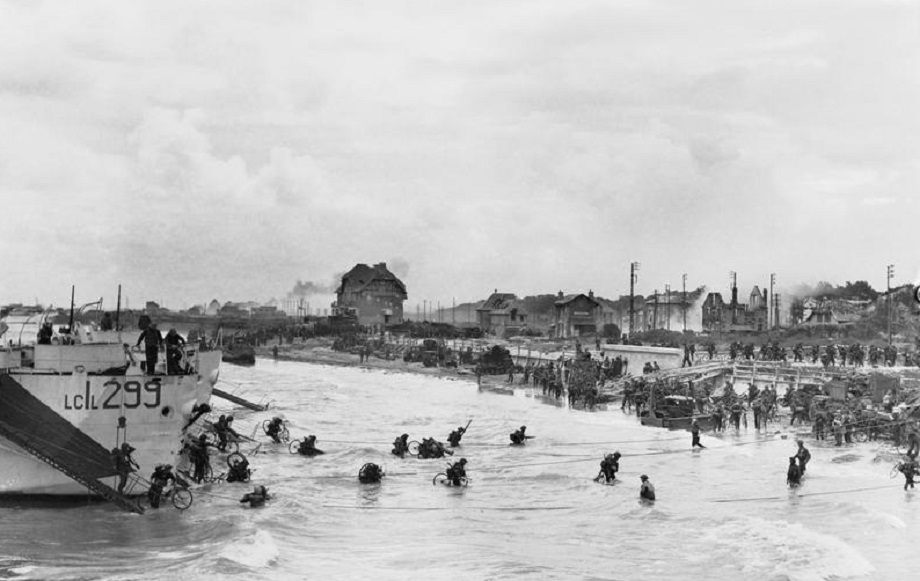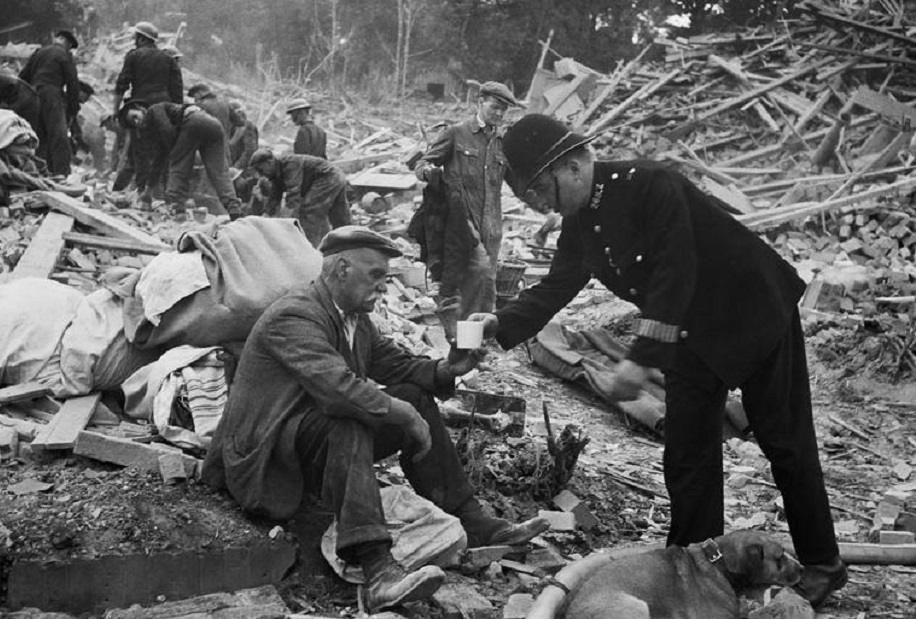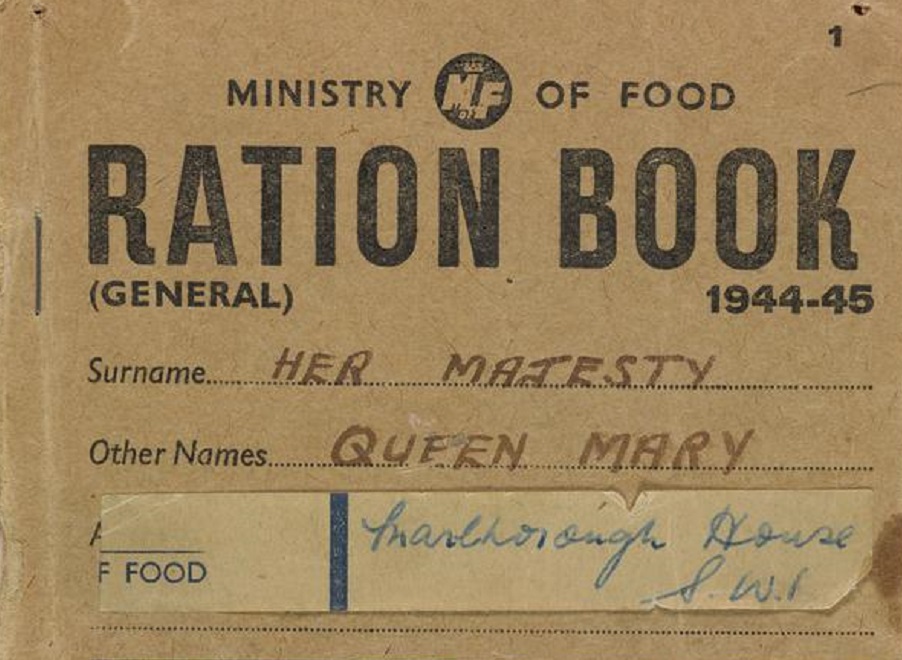Top Historical Anniversaries 2019
From the Liberation of Paris to the fall of the Berlin Wall, take a look at key historical anniversaries brought to life via IWM’s collections.
1. The Battle of Monte Cassino began. 17 January 1944. 75 years
Over several months in 1944, Monte Cassino was the focal point of a series of German defensive positions stretching across the Italian peninsula that prevented the Allied advance to Rome. During the harshest Italian winter on record, the mountainous terrain around the abbey provided the ideal protection for the German Army. The abbey was destroyed by aerial bombing in February 1944, but not before the German troops had rescued its treasures from destruction.
 © IWM NA 14999. Men of the Durham Light Infantry advance through the ruins of Cassino 1944
© IWM NA 14999. Men of the Durham Light Infantry advance through the ruins of Cassino 1944
2. The Great Escape. 24 March 1944. 75 years
On the night of March 24, 1944 a total of 220 British and Commonwealth officers were poised to escape by tunnel from Stalag Luft III, the main camp for allied aircrew prisoners of war at Sagan in Nazi-occupied Poland. Initially three tunnels – known as ‘Tom’, ‘Dick’ and ‘Harry’ – were planned but only 'Harry' was actually completed.
Members of the Escape Committee forged documents, made civilian clothes out of blankets, as well as devices to remove dirt and pump air into the the tunnels.
Of the 76 men who escaped, three made it home to the UK, 23 were recaptured and sent back to Sagan. Hitler personally ordered the execution of the other 50 men.
Read more: Stories Of Real Life Escape Attempts By Allied Prisoners Of War

© IWM HU 21218. German guard demonstrating device used for pumping air into the "Harry" escape tunnel at Stalag Luft III , March 1944
3. NATO: The Western nations join forces. 4 April 1949. 70 years
In 1949, the prospect of further Communist expansion prompted the United States and 11 other Western nations to form the North Atlantic Treaty Organization (NATO).
The Alliance's founding treaty was signed in Washington by a dozen European and North American countries. It was primarily a security pact, with Article 5 stating that a military attack against any of the signatories would be considered an attack against them all.
4. Berlin Blockade Lifted. 12 May 1949. 70 years
An early crisis of the Cold War came to an end when the Soviet Union ceased its 11-month blockade against West Berlin, along with its effort to isolate and annex the city. The blockade had been broken by a massive airlift of vital supplies to West Berlin’s two million citizens but tensions between the former Second World War partners remained.
These clips are from the NATO film collection, digitised by the IWM with exclusive, worldwide rights for licensing.
We are in the process of making the collection available on our website to view and license. Please contact us for further information.
5. D-Day landings. 06 June 1944 - 75 years
On D-Day, 6 June 1944, Allied forces launched a combined naval, air and land assault on Nazi-occupied France.
Codenamed Operation 'Overlord', the Allied landings on the Normandy beaches marked the start of a long campaign to liberate north-west Europe from German occupation. From photos showing the Allies preparing for D-Day to footage of landings on Gold Beach, IWM is a rich resource for marking this key date in the story of the Second World War.

© IWM A 23938. Allied forces during the invasion of Normandy, 6 June 1944
6. First V-1 ‘Doodlebug’ bomb attack on London. 13 June 1944 – 75 years
In June 1944, the Germans started sending V1 Flying bombs to bomb London, also called 'Doodlebugs'. The attacks continued until March 1945 resulting in more than 6,000 civilians dying and almost 18,000 injured. In this photo a policeman supplies tea and sympathy to a now homeless man after a V-1 attack in London that killed his wife and destroyed his home.

© IWM D 21215. Devastation caused by a flying bomb, London, England, 1944
7. Signing of the Treaty of Versailles. 28 June 1919. 100 years.
On this day the peace treaty that ended the First World War was signed by Germany and the Allies at the Palace of Versailles near Paris.
Sir William Orpen was commissioned to record the roles of the politicians, diplomats and military during the peace negotiations, who included British Prime Minister David Lloyd George, French Premier George Clemenceau and US President Woodrow Wilson. In his famous painting it is the extravagance of the architecture that sets the scene, reducing the politicians to a footnote. Their supposedly ordered world is distorted and broken by the mirrors behind them.

Art.IWM ART 2856. The Signing of Peace in the Hall of Mirrors, Versailles, 28th June 1919, by William Orpen
8. End of food rationing in Britain. 18 July 1954. 65 years.
Fourteen years of food rationing in Britain ended at midnight when restrictions on the sale and purchase of meat and bacon were lifted.
Rationing tends to evoke images of deprivation but it was also viewed as a way of sharing the burden fairly, with each person given a ration book. The royal family were used as propaganda to encourage others to comply and more than 200 Ministry of Food short ‘Food Flash’ films were shown in British cinemas.

© Documents.24347. Ration book issued to HM Queen Mary, 1944 - 1945.
9. Liberation of Paris from the Nazis. 19 August 1944. 75 years
The Liberation of Paris began on 19 August, 1944, when members of the French Resistance led an uprising against the German garrison. It ended with the German surrender six days later. Although sporadic fighting continued, France's victorious General de Gaulle marched down the Champs-Elysées with his troops in on the 26th. After four years, Paris was free.
10. Germany invades Poland. 01 September 1939. 80 years
The Second World War began with the Nazi invasion of Poland on 01 September 1939; the United Kingdom and France declared war on Germany two days later.
As part of the Nazi-Soviet pact Poland was divided up with the Soviet Union. To Hitler, the conquest of Poland would bring Lebensraum, or “living space,” for the German people.
Documents in IWM's collection include Adolf Hitler's directive (Führerbefehle) for the Conduct of War, 31 August 1939.

© IWM COL 149. Hitler reviewing a victory parade in Warsaw, Poland. 5 October 1939
11. Berliners celebrate the fall of the wall. 9 November 1989. 30 years.
For nearly 25 years the Berlin Wall was a defining symbol of the Cold War. It had been erected in 1961 on the orders of East Germany's former leader Walter Ulbricht to stop people leaving for West Germany. In 1989 a people's revolution challenged Soviet control of Eastern Europe and that November Berliners tore the wall down. More than 2 million people from East Berlin visited West Berlin that weekend to participate in a celebration that was, one journalist wrote, “the greatest street party in the history of the world.”
